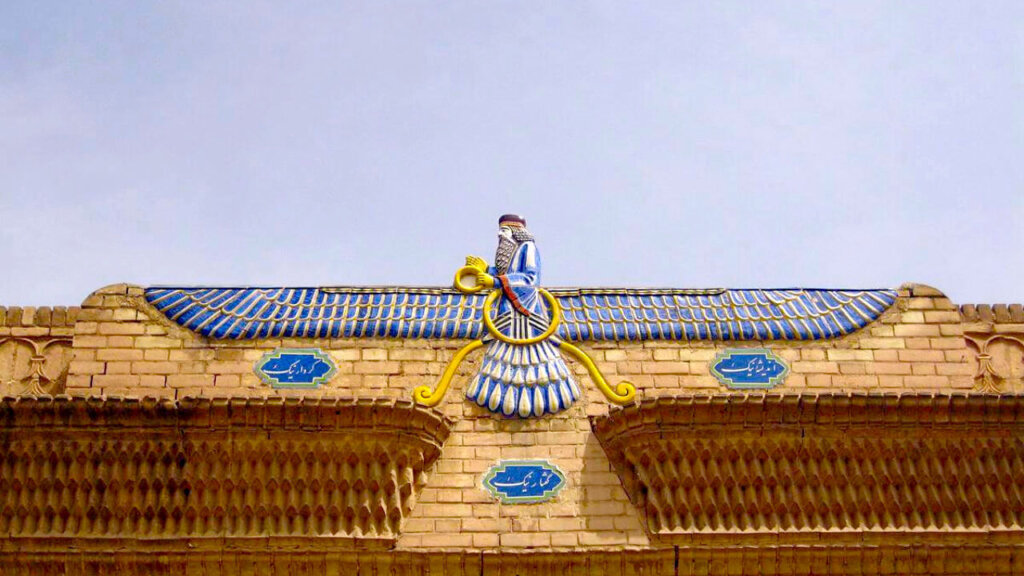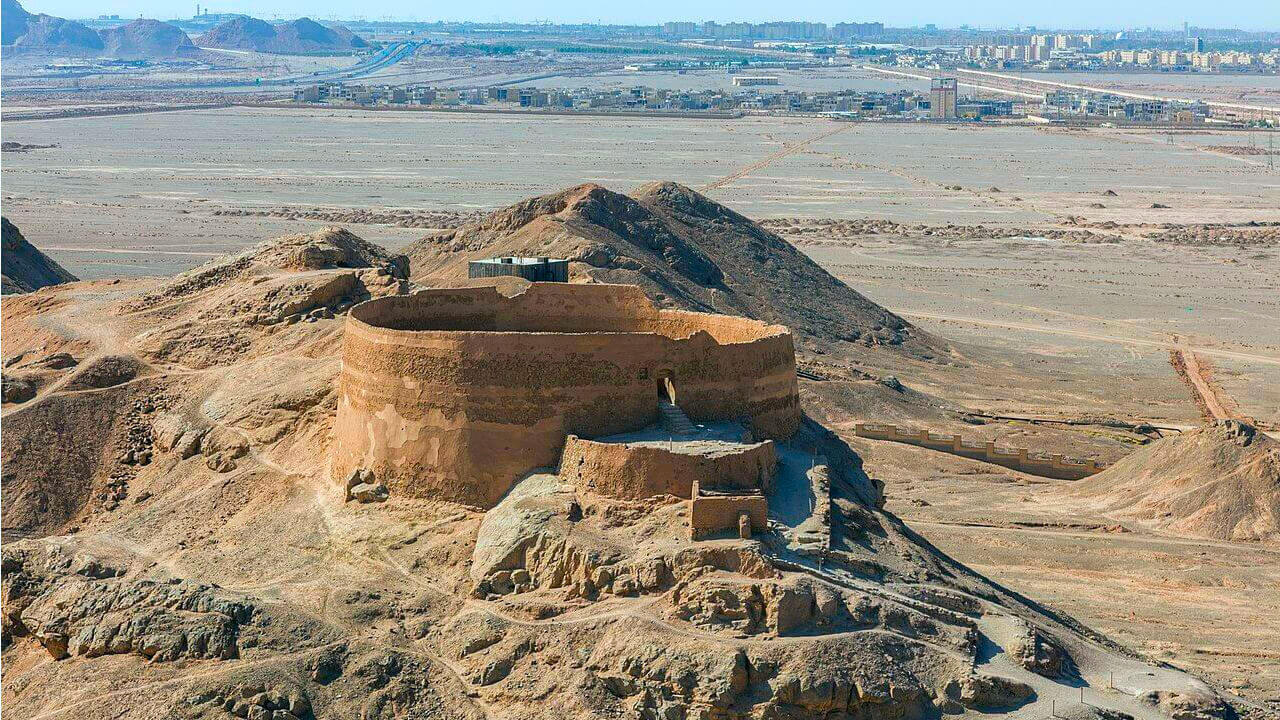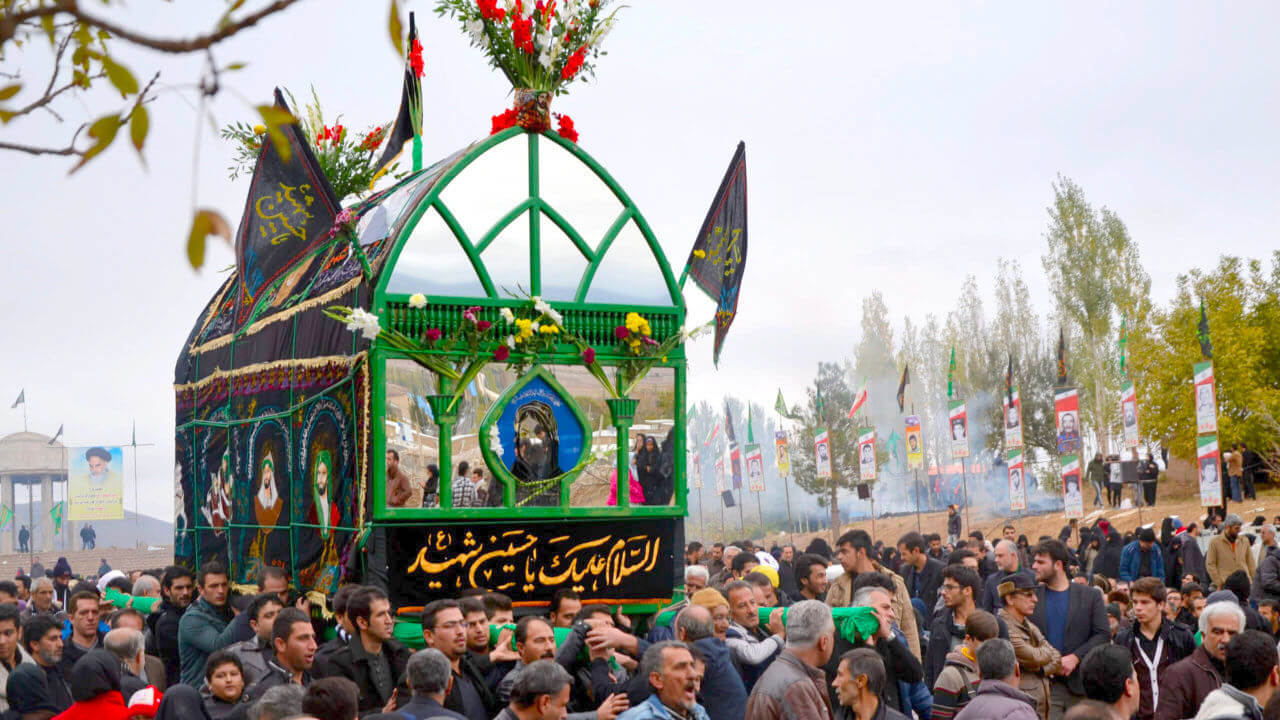
Iran is largely an Islamic country, but its religious past spreads out across millennia and multiple faiths. An exceptionally interesting funeral rite is that of the Towers of Silence, a Zoroastrian custom that is often classified as a sky burial. Similar Towers of Silence can also be found close to Mumbai, India. However, the ones in Iran date back to the mid-5th century BC, according to the Ancient Greek historian, Herodotus.
Before exploring this burial custom, other honorary mentions of ancient Persian burial rites are the Naqsh-e Rostam ancient necropolis and the Tomb of Cyrus the Great close to the Pasargadae palace.
Finally, we discuss modern Iranian funeral customs, focusing especially in Shiite Muslims!

The father of Zoroastrianism is Zoroaster, also known as Zarathustra (Zartosht in Persian). Zoroastrians believe that he lived sometime between 1500 and 1000 BC. That would perhaps make Zoroastrianism the world’s first monotheistic religion. Zoroastrianism emphasizes heavily on duality, and notions of heaven, hell and even Satan (‘Ahriman’) can be traced back to Zoroastrianism. Purity and impurity is perhaps the dyad most relevant to ancient burial rites.
According to Zoroastrianism, dead bodies are more susceptible to be contaminated by demons or evil spirits.
Ideas of purity are extremely important to Zoroastrian beliefs. Specifically, the bodies of the dead, even clipped nails or cut hair from the dead, are highly impure. Zoroastrians treat them as if they are contaminated. That is so because Zoroastrianism links physical impurity to spiritual impurity. They also support that the souls of the dead remain on earth for three days after death. This makes corpses more susceptible to ‘pollution‘ by demons or evil spirits (‘Daevas‘).
These beliefs have a clear link to how Zoroastrians prepared the corpse for burial. Specifically, burying the body in the earth or burning it was completely opposed to Zoroastrian views. That is so because fire and earth are sacred and must remain pure.
Instead, the family washed the body with water and bull’s urine (‘gomez’). After that they would also wash the clothes of the dead, as well as the place where the body was kept. At the same time, they kept dogs nearby in order to scare away any demons that would try to contaminate the body. This practice is called ‘sagdid’ which can be roughly translated to glance of the dog (in Persian ‘sag’ means dog and ‘-did’ to see).
They then took the body to the Towers of Silence for a process known as natural excarnation. This refers to the removal of the skin and organs of the dead with natural means.

A prime example of Towers of Silence (or Dakhmas) are those close to the city of Yazd in central Iran. They are relatively well-preserved and consist one of the most popular touristic attractions of the region. In ancient times there was a considerable distance between the Towers of Silence and Yazd. With the expansion of the city throughout the years, the two towers ended up at the southwest outskirts of Yazd.
The cyclical towers have distinct mud-brick walls and they include three different rings: the outer ring was for bodies of men, the middle one for women and the innermost ring for children. In the center of the tower there is a well. Zoroastrians also placed the bodies in a specific way. They had to face the sky, while their feet are pointing to the central well and their head to the walls.
The Towers of Silence have no roof making therefore the bodies of the dead easily accessible for carrion birds, such as vultures. At the same time, this also exposed them to the elements of nature, mostly the sun and heat. The idea behind using these elements was that they would clean the skeletal remains after the flesh was eaten. Once the bones were complete fleshless, so also purified, they were placed in the well in the center of the tower. After that Zoroastrians kept the remains in ossuaries in or around the Tower.
Zoroastrianism is a recognized minority religion in modern Iran. However, Zoroastrians have experienced extreme persecution in different historical periods. Their number dropped to just 15.000-25.000 (2012). They kept using the Towers of Silence until the 1970s, making this tradition on of the oldest to still take place in modern times.
After the ban by the Iranian government, even orthodox Zoroastrians had to to adjust to new burial customs. For example, they started using cremation or burial in cement in order to not pollute the earth.
Contemporary Iran has one of the largest Shiite, or Shia Muslim communities in the world. Islam has defined the country’s history regarding funeral traditions and burial rites. Additionally, customs of Zoroastrian origin remain, to an extent, in place however they are intermixed with Islamic traditions.
An important Muslim commemoration ritual is the Mourning of Muharram that Shiites celebrate. It is a remembrance ritual for the Battle of Karbala, during which, Muslims weep and symbolically mourn. The Mourning of Muharram is a way for Shiites to create a common identity, and so it takes place all over Iran.

In short, Muslim burial traditions are almost scripted. There are often two funerals, a stricter, formal one following the state religious rules. After that there is an informal one where mourning takes a more personal note.
The first funeral needs to take place as soon as possible after death, preferably within 24 hours. Public speeches are discouraged in an effort for the funerals to be shorter but also to avoid any potential political comments. It is important for Iranians to wash the dead and wrap them in a white cloth, and family members may choose to be present for this. Moreover, in Tehran it is somewhat of a modern tradition that the procession of the body to the cemetery is with a silver Mercedes. In a way, everyone gets to ride in a silver Mercedes at least once!
After a couple of days, there is often a second funeral with relatives and neighbors. They usually go to the house of the grieving family so they can exchange stories from the life of deceased. Iranians also share funeral food, including traditional halvah and may sing specific funeral songs.
We hope you learned something new regarding this country’s death practices!
If you want learn more on elaborate second funeral, check out our Nigeria and Ghana articles. And if you want to explore a country with an interesting Sunni religious background, we recommend Sudan. Finally, for another perspective on sky burials, read more on Tibetan Celestial Burials or the Hanging Coffins of the Philippines.
The average mixed death rate in Iran is 4,843 per 1.000 people (2018).
Iranians bury their dead as soon as possible after death, preferably within 24 hours.
In ancient times Zoroastrianism was the dominant religion in Persia. That changed with the spread of Islam. Originally, Sunnism was more common, which lasted until the Mongol Invasion of Iran. After that, Iran is predominantly a Shiite country.
There is an organ donation system in place in Iran. However, there is no data regarding the number of utilized donated organs in 2019, despite the existence of donors. In 2018 the same rate was 11,26 per million population.